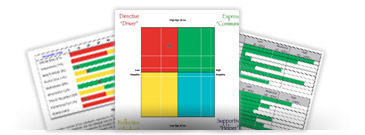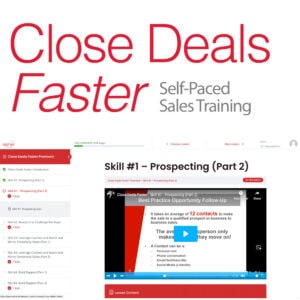“Prove it!” – Smart Strategies for Product Demonstrations
After a salesperson gets their foot in the door and moves past the qualification stage, she earns her keep depending largely on what she does during the next stage: presentation. It can be said that here is where true salesmanship most shines, as the salesperson must communicate benefits, features and competitive advantages while holding the interest of the buyer and making a compelling case for the sale.
One excellent way to accomplish the above is to show rather than talk about the product or service through product demonstrations.
Listen first
Being part of the presentation phase of the consultative sales process, product demonstrations come after plenty of listening has already taken place in order to find out the prospect’s business pain or opportunity. This permits the salesperson to tailor the product demonstration to the specific buyer, including matching their tone and body language.
Allow for a trial period
Sales training programs often recommend allowing a prospect a trial or test period for them to work with a product or service hands-on, with no obligation. Another name for this is the “puppy dog close.” Astoundingly, some sales trainers claim this technique no longer works, claiming that “everyone” has wised up to it. Since human nature really hasn’t changed much in thousands of years, it is safe to say that people still enjoy testing out a product or service to ensure it meets expectations before committing, so this technique is still valid.
This demonstration technique is effective because it is easier to keep something which is already being used and working than to return it and keep shopping around. A way to make it even more effective is to ask for a commitment before lending out the product, performing a trial run, or sponsoring a beta test, such as “If the demo is successful, will you be ready to go ahead with the project?”
 Give Away Free Samples
Give Away Free Samples
How often hasn’t a parent walked by a food court stall offering a free morsel of delicious chicken or a sweet cookie to their children and ended up buying the full item for their kids (and even themselves)? Free samples basically sell the product all by themselves and are especially effective if they:
• Pique interest, but do not satisfy (make the customer want more)
• Are cost effective, so many samples can be given away cheaply
• Are accompanied by coupons, or the samples are surrounded by the full product, making the purchasing decision immediate and easy
B2B service companies can use a modified version of this through the “freemium” model. As an example, a software company might give away a completely free and functional program in order to establish their brand, and then sell a premium product with even more features to a small percentage of their users. Companies using this model, like Skype, are profitable selling only 12 percent of their product and giving the rest away. Each company’s sales training program should explore the feasibility of the freemium model for their specific product, as it is not suited to every industry.
Involve delivery or technical personnel in the demonstration
Introducing a prospect to the staff that will actually perform the work (and their support personnel) is an excellent way to not only break the ice, but also build the prospect’s confidence in the capabilities of a company and its people, making the buying decision easier.
Every B2B salesperson should attend a corporate sales training program that covers presentation and product demonstration skills in depth. In the meantime, the quick pointers above should help improve sales results — good luck!




